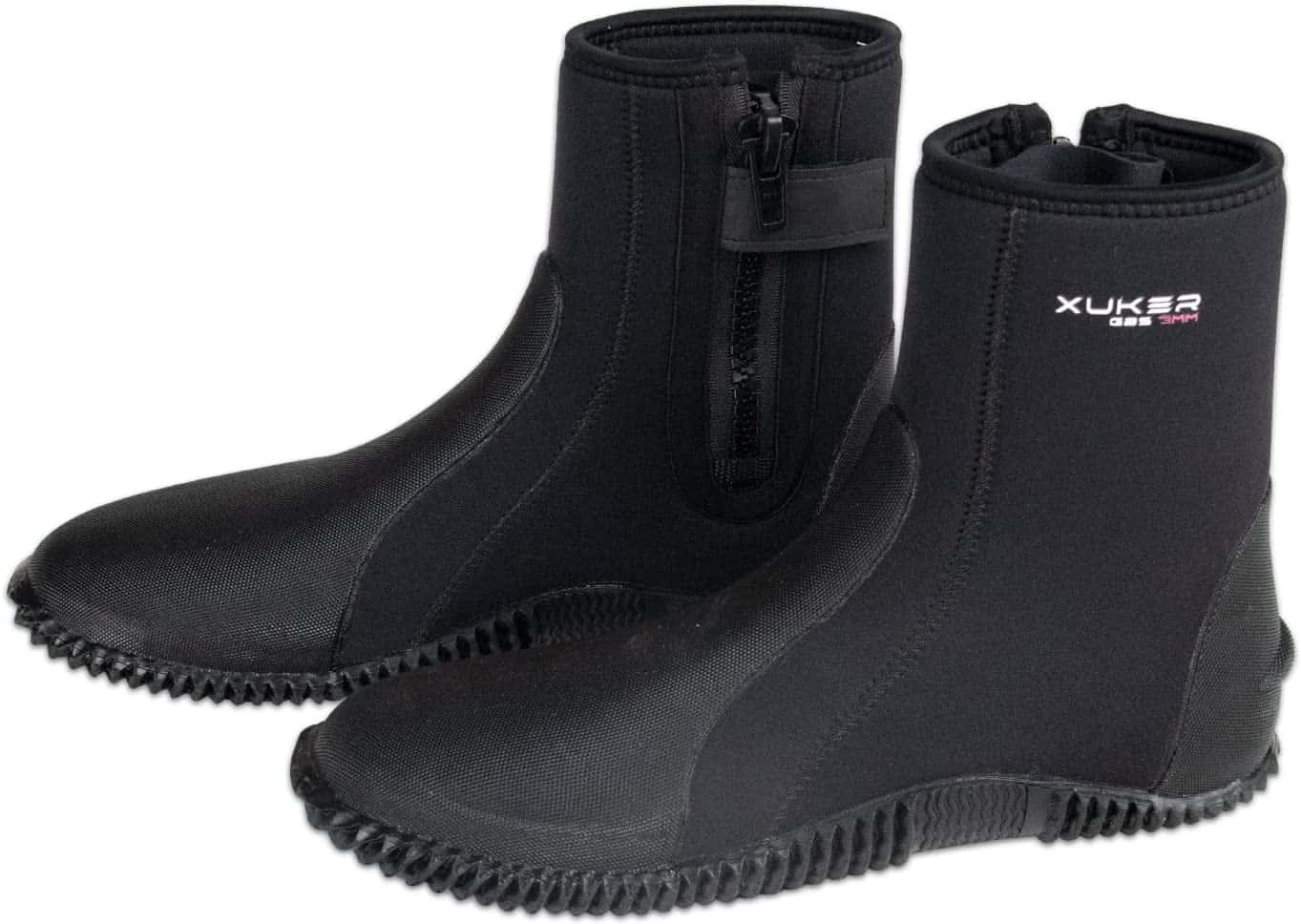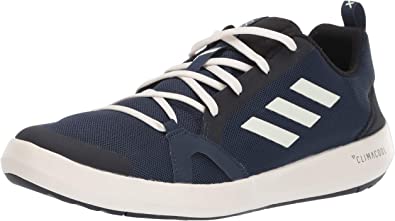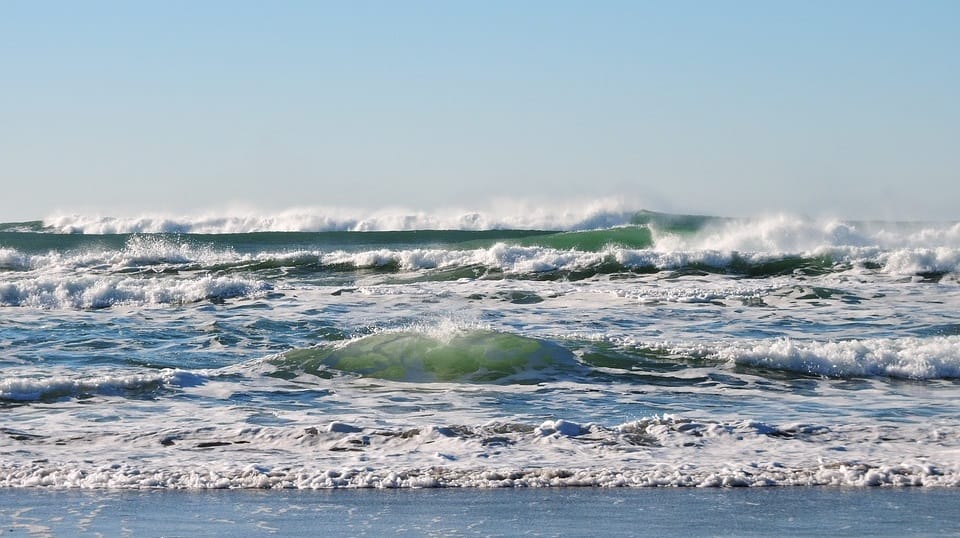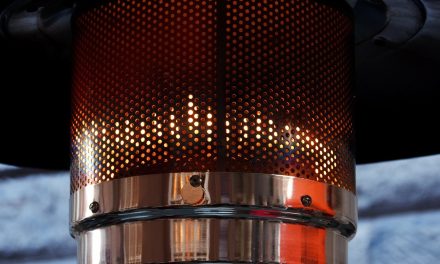Water shoes are a special type of footwear that’s designed to protect your feet from rocks, sticks, and other debris when you’re in the water. They’re used for casual swims at the beach, paddling or boating/kayaking trips on a lake or river, and for canyoneering.
For the most part, they’re designed with sturdy, non-slip soles that provide good traction on wet terrain. Also, water shoes are built with various drainage holes so water can quickly escape from the inside of the shoe.
Types Of Water Shoes
There are many types of water shoes out there. Here’s how they compare in the real world:
Sandals
While not necessarily marketed as “water shoes,” sandals are a popular choice for outdoor recreation at the beach. Although flip flops aren’t very practical water shoes, sturdy sandals, like Chacos or Tevas, can provide a decent amount of protection for the underside of your feet and a lot of breathability.
The downside to sandals is that they offer no protection for the top of your feet. Moreover, they are not always great for longer walks or hikes.

Neoprene Booties
Neoprene booties are popular among paddlers, divers, and cold-water surfers, but they can also be great water shoes. In particular, neoprene is great for cold environments because it is an effective insulator.
The thing to remember with neoprene booties is that they tend to have thin, flexible soles. So, it’s a good idea to look for a model that has a thicker sole or a plastic shank to help protect your feet from debris.
Additionally, it’s a common misconception that neoprene booties keep your feet dry. In fact, they do the opposite.
Interestingly, neoprene is a very effective insulator because it traps water next to your skin. Then your body heat naturally warms the trapped water, providing you with insulation from the colder water around you.
This means that anyone wearing neoprene booties should be prepared to have wet feet throughout the day. While your feet will likely be warm, they almost certainly won’t be dry with these shoes.

Sneaker-Style
These days, many manufacturers now make water shoes that look very similar to sneakers that you might wear around town. These “sneaker-style” water shoes come in two main subtypes:
Mesh Uppers
Sneaker-style water shoes with mesh upper fabrics are ideal for people that spend a lot of time walking around in the water. They are highly breathable and are great at draining water from the inside of your shoe.
Additionally, mesh water shoes are form-fitting, which makes them a nice choice for swimming in lakes or near rocky beaches. The drawback to this style of shoe is that they are less durable and offer less protection than their canvas counterparts.
Canvas Uppers
Water shoes with canvas uppers are popular among boaters and canyoneers because they are durable and offer plenty of foot protection.
They are generally less breathable and are less adept at draining water. But, when it comes to style, comfort, and functionality on long walks, canvas sneaker-style shoes take the cake.

What To Look For In Water Shoes
Due to the sheer number of water shoes on the market today, it can be difficult to find the right option for your adventures. So, here are some of the top things to look for in your next pair of water footwear.
Breathability
Unless you’re buying neoprene booties (which are designed to insulate you from the cold), water shoes should be breathable. That way, they prevent your feet from feeling clammy and wrinkly at the end of the day.
Mesh sneaker-style water shoes and sandals tend to be best when it comes to breathability. Canvas shoes, however, sacrifice some breathability in exchange for durability and foot protection.
Water Drainage
The best water shoes will have built-in drainage holes to allow water to escape from the inside of the shoe. This is ideal for anyone that likes to do a lot of swimming or for trips where you’re constantly going in and out of the water.
Keep in mind that neoprene booties actually trap water instead of draining it. This is because neoprene insulates our body by heating up the water that it traps against our skin. So, while neoprene booties won’t drain water, they are ideal for use in cold conditions.
Foot Protection
The main purpose of a pair of water shoes is to protect you from sharp rocks and other objects that can cut your feet while you’re swimming or walking outside. Thus, a pair of water shoes that offers good foot protection is key.
When looking at water shoes, the models that will provide the most protection will have thick rubber soles. They will also have burly canvas uppers that are tear-resistant.
Canvas sneaker-style shoes are generally the best when it comes to all-around foot protection. Mesh sneaker-style models are a close second, but they are less effective when protecting the tops of your feet.
Neoprene booties are a good option for foot protection, so long as they have thick rubber soles or plastic inserts in the midsole. Otherwise, neoprene booties often have very thin outsoles which offer minimal foot protection.
Finally, sandals offer the least amount of foot protection, due to their open toe design. While they are decent at shielding the bottoms of your feet from debris, they won’t do much to protect your toes from sharp rocks.
Frequently Asked Questions
Here are our answers to some of your most frequently asked questions about water shoes:
CAN YOU SWIM IN WATER SHOES?
You can swim in water shoes. But, the type of water shoes that you buy will dictate whether swimming in your footwear is a practical thing to do.
If you’re planning on doing a lot of swimming in your water shoes, neoprene booties or well-fitting sandals are a good choice. Mesh sneaker-style shoes can also work well for this purpose, particularly if they have thin soles and mesh uppers that are good at draining water.
Canvas sneaker-style models, on the other hand, tend to be a bit too bulky and heavy for regular swimming. Instead, they’re best for paddling, sailing, canyoneering, and hiking applications where swimming is the exception, not the rule.
SHOULD WATER SHOES BE TIGHT?
Water shoes should be snug if you’re buying a pair of neoprene booties or form-fitting mesh sneaker-style shoes. That way, they won’t fall off your feet as you traipse around in the water.
When it comes to sandal-style water shoes, you certainly want a model that fits your feet. But you don’t want to size your sandals so small that the straps irritate your feet.
Finally, with bulkier canvas sneaker-style shoes, you should look for a size that fits your feet just like a normal sneaker would. Since the point of this type of water shoe isn’t necessarily to go lap swimming in your local pool, a comfortable fit is usually sufficient for occasional forays into the water.
ARE WATER SHOES GOOD FOR WALKING?
Some water shoes are good for walking, but not all are great for long strolls in the woods. If you want to do a lot of walking in your water shoes, opt for a sneaker-style model.
The thicker soles and midsoles on these shoes will provide your feet with enough support for walking. Alternatively, neoprene booties and sandals tend to be less ideal for long walks.
SHOULD YOU WEAR WATER SHOES IN THE OCEAN?
In general, it’s a good idea to wear water shoes or some sort of footwear wherever you go swimming in the ocean or a lake. This is because water shoes protect your feet from sharp rocks and other debris that might be hidden under the water’s surface.
However, if you’re swimming at a very sandy beach, whether or not you wear water shoes is a very personal decision. While some people never go in the water without them, others have never even considered using water shoes at the beach.
ARE WATER SHOES COMFORTABLE?
Comfort is subjective, but most water shoes are comfy enough to wear all day. Ultimately, comfort in a water shoe is all about getting the model that feels best on your feet and that’s sized appropriately.
DO WATER SHOES KEEP YOUR FEET DRY?
Most water shoes are not designed to keep your feet dry. Instead, water shoes are crafted to protect your feet from sharp rocks and debris while you’re in the water.
Generally speaking, this type of footwear will have drainage holes throughout the sole and upper fabric to allow water to escape from the inside of the shoe. So, while they’re not designed to keep your feet dry, they are engineered to make you more comfortable in the water.
Unfortunately, keeping one’s feet completely dry is tricky in the outdoors. If you want to keep water off your feet, a pair of waterproof socks and sturdy boots is normally your best bet.
Final Thoughts
Water shoes are essential for anyone that spends a lot of time in the water or on a boat. They protect your feet and make walking in wet conditions much more comfortable. The trick is finding the pair that feels best on your feet.
- Tint Colors Explained For Polarized Sunglasses - November 19, 2022
- Top 4 Best Portable Camping Showers of 2022 - November 19, 2022
- How to Choose Water Shoes & What to Look For - November 18, 2022






